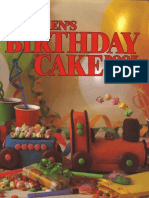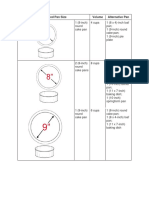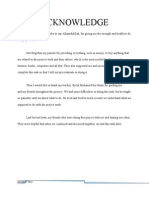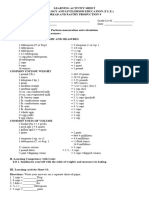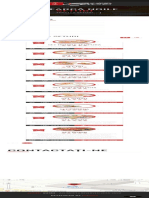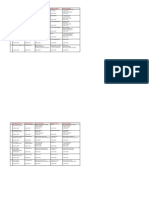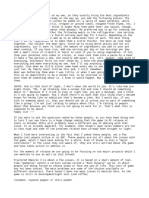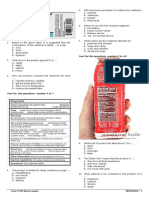100% found this document useful (1 vote)
599 views7 pagesWacław Franciszek Sierpiński (1882 - 1969), A Polish Mathematician, Is Known For
Mathematics is used in cake baking and decorating in several key ways:
1) Measurement is essential for determining ingredient amounts and baking times. Recipes specify measurements like cups, teaspoons, fractions that must be carefully followed.
2) Ratios show the proportions of ingredients in a recipe. A simple cake recipe may call for a 3/4:1:1 1/2 ratio of butter, sugar, and flour.
3) Geometry and symmetry help in decorating cakes. Placement of flowers or other toppings can be calculated to space them evenly. Cutting the cake into equal portions relies on identifying the axis of symmetry.
Uploaded by
nur_illCopyright
© Attribution Non-Commercial (BY-NC)
We take content rights seriously. If you suspect this is your content, claim it here.
Available Formats
Download as DOCX, PDF, TXT or read online on Scribd
100% found this document useful (1 vote)
599 views7 pagesWacław Franciszek Sierpiński (1882 - 1969), A Polish Mathematician, Is Known For
Mathematics is used in cake baking and decorating in several key ways:
1) Measurement is essential for determining ingredient amounts and baking times. Recipes specify measurements like cups, teaspoons, fractions that must be carefully followed.
2) Ratios show the proportions of ingredients in a recipe. A simple cake recipe may call for a 3/4:1:1 1/2 ratio of butter, sugar, and flour.
3) Geometry and symmetry help in decorating cakes. Placement of flowers or other toppings can be calculated to space them evenly. Cutting the cake into equal portions relies on identifying the axis of symmetry.
Uploaded by
nur_illCopyright
© Attribution Non-Commercial (BY-NC)
We take content rights seriously. If you suspect this is your content, claim it here.
Available Formats
Download as DOCX, PDF, TXT or read online on Scribd
/ 7

